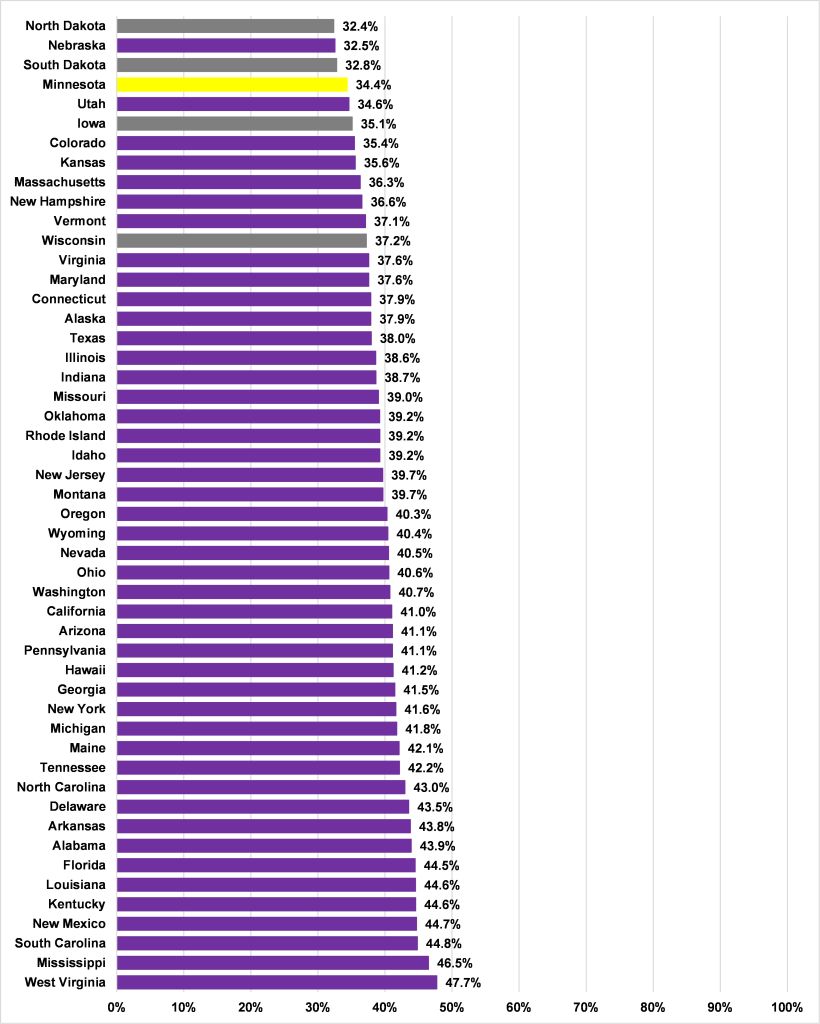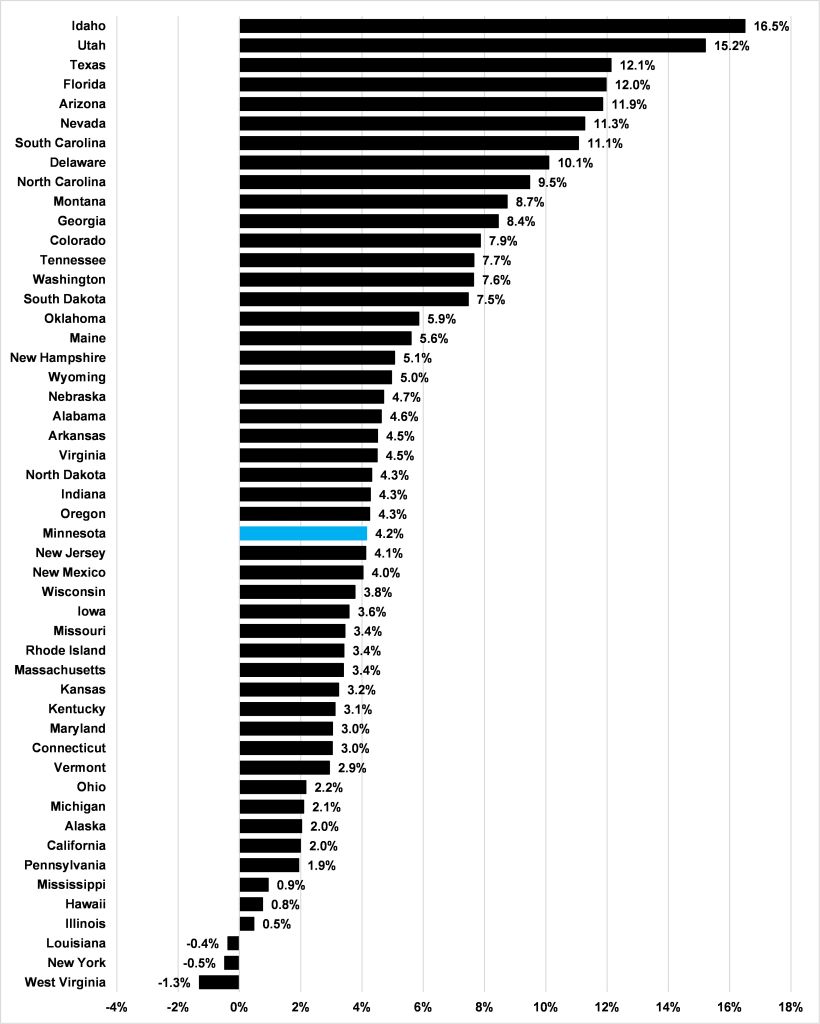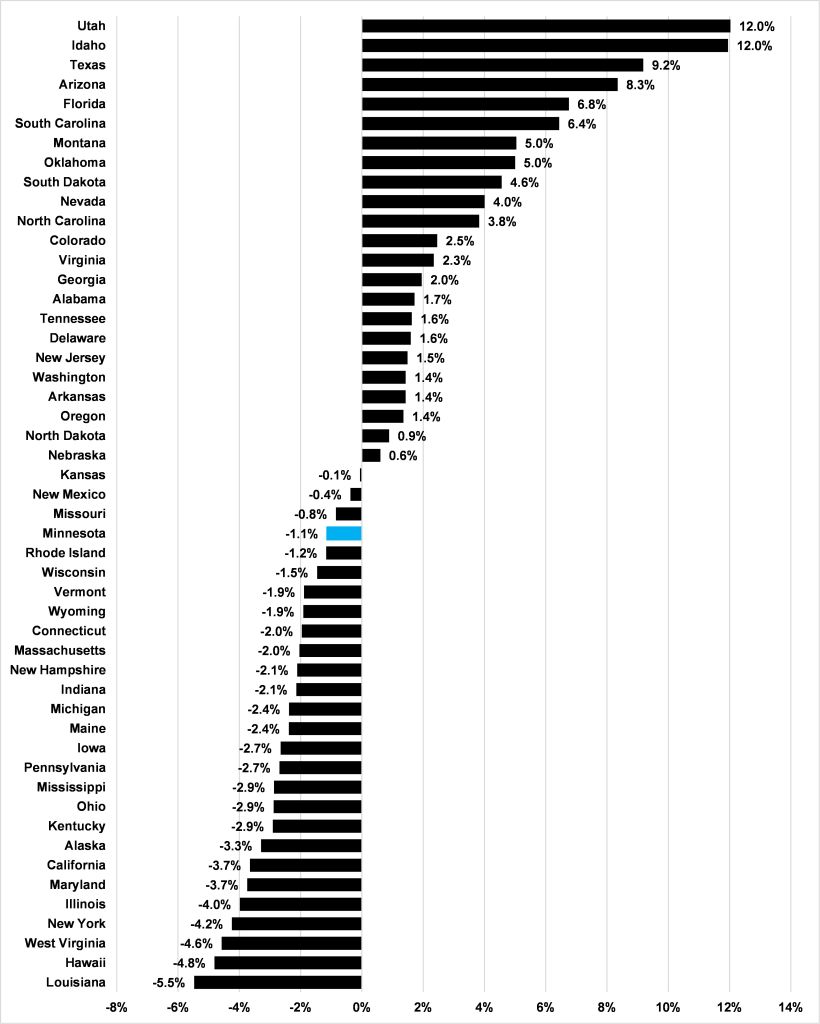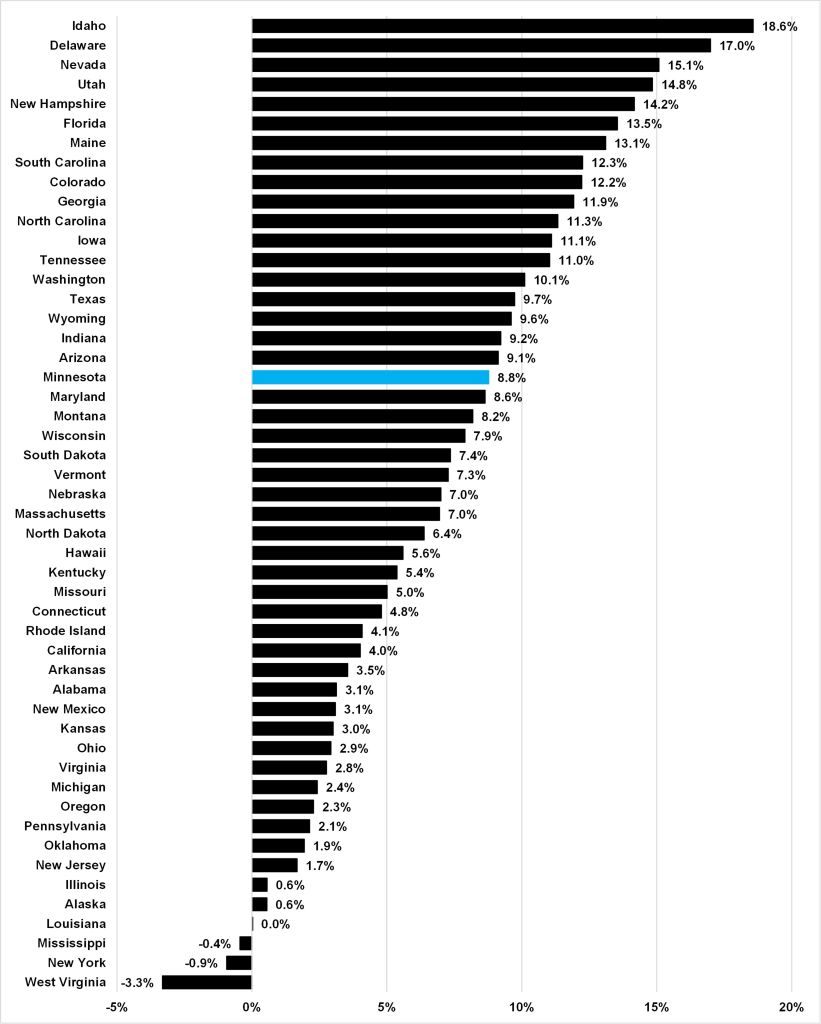Yesterday, I noted that job growth in Minnesota was up from July to August but so was unemployment. How does that work?
Jobs and unemployment up?
As I’ve noted before, estimates of the number of jobs come from the Establishment survey which the Bureau of Labor Statistics (BLS) collects as part of its Current Employment Statistics (CES) survey.
The U.S. Census Bureau conducts the Household survey as part of its Current Population Survey (CPS). This gives us the Local Area Unemployment Statistics (LAUS). The LAUS break down each state’s “Civilian non-institutional population” — which the Census Bureau defines as “All U.S. civilians not residing in institutional group quarters facilities such as correctional institutions, juvenile facilities, skilled nursing facilities, and other long-term care living arrangements” — into those who are in the labor force and those who are not. Those who are in it are further broken down into those who are employed and those who are not but are looking, the unemployed. The unemployment rate is calculated by dividing the number of people unemployed (113,563 in Minnesota in August) by the number of people in the labor force (3,156,875). From July to August, the unemployment rate rose to 3.6%. But, as the ratio of two numbers, did it change because there were fewer people in the labor force or more people unemployed?
Table 1 gives us the answer. We see that Minnesota’s workforce stagnated from July to August while the number of Minnesotans unemployed increased by 4.2%. This is what lies behind that increased unemployment rate.
Table 1: Employment status of the civilian noninstitutional population in Minnesota, 2025

But Table 1 shows us other things, too. We see that the number of Minnesotans actually employed edged down by 0.1%. We can also see, by subtracting the number of people in the labor force from the number in the civilian non-institutional population, the number of Minnesotans who are not in the labor force at all: 1.5 million. If we add them to those counted as unemployed to get a measure the total not working and divide that by the civilian non-institutional population, we get a “true” unemployment rate of 34.4%.
These rates vary widely across the United States, as Figure 2 shows, from 47.7% in West Virginia to 32.4% in North Dakota. Despite their varying state economic policies, Minnesota and its neighbors all score relatively well on this measure, suggesting that something else is driving them, at least to a large degree.
Figure 2: “True” unemployment rate, August 2025

Minnesota’s labor force over the longer term
Having seen how these numbers are put together and what they mean, how have they changed over the longer term?
Figure 3 shows that, over Gov. Walz’ time in office (2018 to 2024, the most recent year for which data are available), the civilian non-institutional population in Minnesota grew by 4.2%, faster than in 23 states, and slower than in 26 others.
Figure 3: Change in civilian non-institutional population, 2018 to 2024

Figure 4 shows that Minnesota was one of 27 states where the number of people employed actually declined from 2018 to 2024, by 1.1%. However, this was, again, still a better performance than in 23 other states and worse than in 26.
Figure 4: Change in number of people employed, 2018 to 2024

If the civilian non-institutional population has increased but the number of people employed has decreased, that must mean that the number of Minnesotans not working has risen. That is exactly what Figure 5 shows. Between 2018 and 2024, the number of people in Minnesota either unemployed or out of the labor force completely increased by 8.8%, a performance worse than in 31 other states.
Figure 5: Change in number of people employed, 2018 to 2024

These numbers aren’t so bad as we have seen for per capita GDP or job growth in Minnesota under Gov. Walz. Our results here are all sort of middling, and there isn’t a sharp fall off relative to the rest of the United States. That is encouraging. But the fact remains that Minnesota is on the wrong side of these two charts: the number of Minnesotans working is declining and the number not working is rising.









